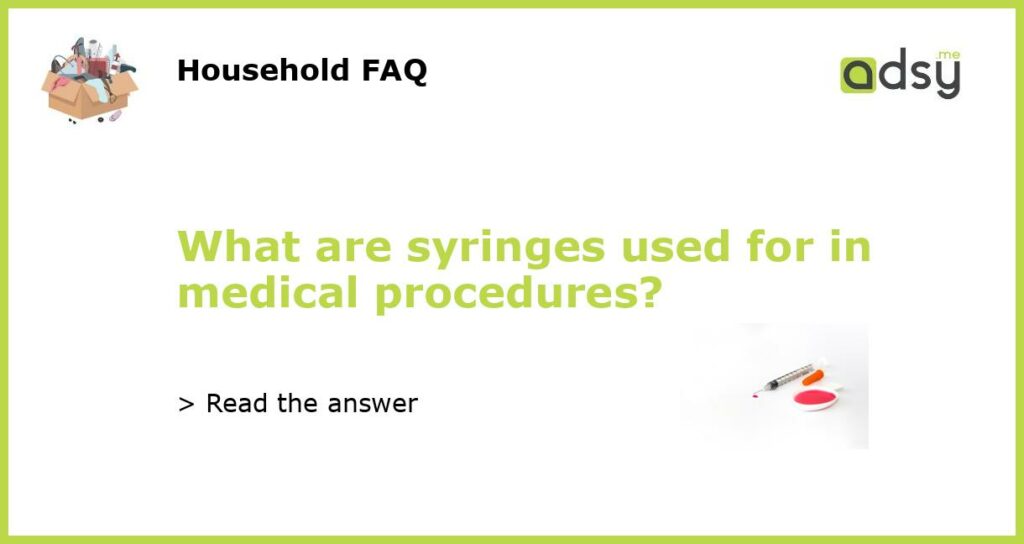Syringes in Medical Procedures: The Essential Tool for Healthcare
Syringes are a fundamental and indispensable tool used in various medical procedures. From delivering medications to collecting blood samples, syringes play a crucial role in providing healthcare services. Let’s delve into the different uses of syringes in medical procedures.
Medication Administration
Syringes are commonly used to administer medications in healthcare settings. Whether it is vaccines, insulin, or other injectable medications, syringes provide a precise and controlled method of delivering drugs into the patient’s body. Healthcare professionals ensure accurate dosage by drawing the medication into the syringe, choosing the appropriate needle, and injecting it into the patient through intramuscular, subcutaneous, or intravenous routes.
Blood Collection
When healthcare providers need to collect blood samples for diagnostic purposes or to monitor certain conditions, they rely on syringes. In venipuncture, a common technique for drawing blood, a healthcare professional attaches a needle to the syringe and punctures a vein to collect the desired amount of blood. This collected blood can then be sent to the laboratory for analysis and diagnosis of various diseases, infections, or tracking treatment progress.
Irrigation and Aspiration
In medical procedures such as wound care or surgeries, syringes are used for irrigation and aspiration. Irrigation involves flushing a wound or an affected area with a sterile solution to clean it and remove any debris or contaminants. Syringes with a catheter tip or an attached irrigation system help healthcare providers deliver the solution with precision and control. Similarly, syringes are commonly used for aspiration, which involves removing fluids, such as pus or excess blood, from a specific area during surgical procedures.
Diagnostic Procedures
Syringes also play a crucial role in various diagnostic procedures. For instance, in lumbar puncture, a syringe is used to collect cerebrospinal fluid to diagnose conditions affecting the central nervous system. Similarly, syringes are utilized in amniocentesis, a prenatal diagnostic procedure, to extract amniotic fluid for assessing the health of a fetus. These diagnostic procedures provide essential information for diagnosing, managing, and monitoring specific medical conditions.
Intravenous Fluid Administration
Intravenous (IV) fluid administration is a vital aspect of patient care in hospitals and other healthcare settings. Syringes are used to prepare and deliver IV medications, fluids, and solutions. Healthcare professionals use syringes to draw the required volume of fluid from a larger container, such as an IV bag or vial, and then administer it directly into the patient’s bloodstream through an IV line. This method ensures precise control over the flow rate and dosage of fluids being delivered to the patient.






